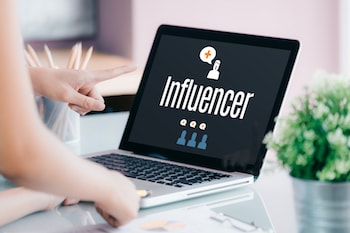6 Ways to Intensify Digital Word-of-Mouth
 More than a few physicians have gone into practice with the expectation, wish or hope, that marketing or advertising was mostly unnecessary. They believed that they would inspire a word-of-mouth-only (WOM) practice, and patient and professional referrals would do it all.
More than a few physicians have gone into practice with the expectation, wish or hope, that marketing or advertising was mostly unnecessary. They believed that they would inspire a word-of-mouth-only (WOM) practice, and patient and professional referrals would do it all.
Related: 9 Essential Steps to Improve Doctor Ratings Online
That concept was popular, but largely unrealistic, a decade or two ago. And, in today’s highly competitive environment, the process of referrals and the definition of word-of-mouth advertising have changed. The two main dynamics at work have been:
- Healthcare delivery, including hospital and provider selection, is now dominated by the Internet. Various forms of digital marketing have become the public’s primary window on services and providers
- The word-of-mouth process is enabled by the Internet through doctor reviews, patient comments and ratings, two-way communications, social media and online reputation visibility. One-to-one is now one-to-many.
This defines unpaid word-of-mouth promotion as when the positive experience of one or more customer inspires them to share their feelings of satisfaction with others. And, because this validation, recommendation or referral is seen online, the WOM effect can be extremely wide and reach hundreds of individuals.
The power and effectiveness of Word-of-Mouth…
Word-of-mouth gets its strength and effectiveness mainly as a form of social proof and its influence on others…and that’s nothing new. This is where people validate their actions or decisions, in part, as a reflection of “correct behavior” they see in others.
- About 70 percent of people trust the online reviews of others (Nielsen)
- Up to half of buying decisions are influenced by word-of-mouth (McKinsey)
- Half of America’s consumers trust brand awareness of friends and family (Nielsen)
- Friend or family recommendation is 50 times more likely to inspire a purchase decision (McKinsey)
- Negative comments reach twice as many people as positive ones (Federal Consumer Affairs)
- Individuals are most likely to share positive experiences
Tips and techniques for high-level word-of-mouth…
Word-of-mouth is inspired when customer experiences exceed expectations. The fact is, healthcare consumers expect the “ordinary” experience that they have traditionally found in a medical facility or practice. Generally, it’s not too difficult to provide an exceptional encounter that motivates patients to tell others.
Dramatically change the paradigm of “office operations” through insightful staff training. Both staff and patients will appreciate the spectacular difference between a “typical” healthcare appointment and, for example, shopping at an upscale retail department store. Devise a staff training experience that consistently delivers patient experience at a new and unexpected standard.
Open new channels of personal communications. It turns out that the majority of doctor and hospital online reviews are seldom about medical or clinical issues. Patients place high importance on practical things that are easy for them to understand. Invest in upgrades for staff communications skills, which are important to patients. Provide an online patient portal, secure email channels and easy means for a patient to communicate with the doctor, staff or practice.
Ask patients for referrals, recommendations, ratings and online comments. If a patient is not asked, they may never know how or when to express themselves online. Encourage them to tell friends and family. What’s more, give patients specific written instructions as to how and where they can express themselves online.
Identify and encourage “ambassadors.” Some individuals are naturally inclined to spread the word and will eagerly trigger expressions of word-of-mouth. When you can identify these ambassadors—also called influencers or sometimes brand advocates—they become a regular outlet for WOM via social media, blogs and discussion groups, and similar outlets.
Never fail to say thanks. Individuals who make referrals or recommendations usually don’t expect a word of thanks. (Mostly, their review is to benefit friends, family and/or others.) When a note of appreciation comes to them, that alone, exceeds their expectations. And the thank you reinforces and encourages more of the same behavior.
Word-of-mouth is (almost) free…
Word-of-mouth has always had the strong appeal of being—or appearing to be—free or low cost. The reality is that WOM is not entirely free. By definition, it is an “unpaid” promotion channel. That said, it does not happen spontaneously.
There needs to be a modest budget allowance to encourage and inspire WOM marketing. In addition, news releases, PPC advertising and other digital marketing tools can activate a higher level of word-of-mouth marketing. By far, it is one of the most cost-effective methods in your marketing toolbox.








